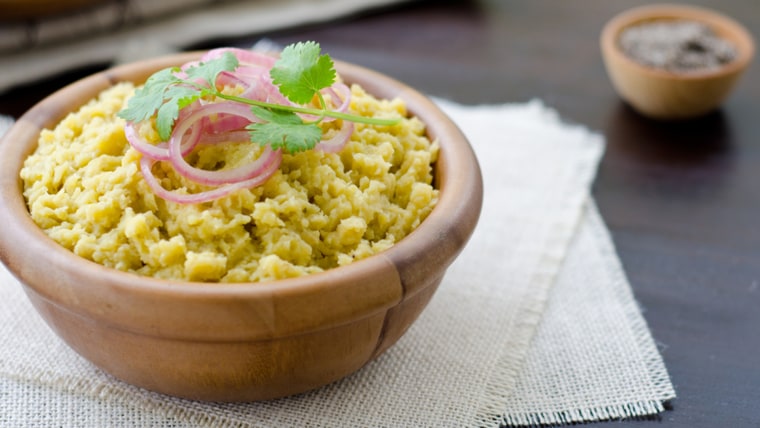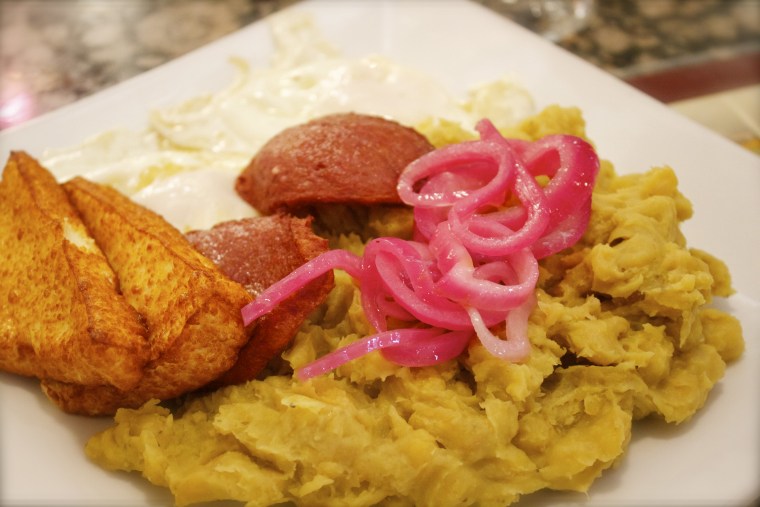
Global sensation Romeo Santos, the Bronx-born, self-proclaimed King of Bachata—a swingy, sensuous genre of Dominican music first created on the Caribbean island’s sugarcane fields—romanced the TODAY plaza with a live performance that had our crowd swaying and swooning Monday morning. In honor of his visit, we wanted to present you with another Dominican classic—one of the edible kind.
Mangú is considered the official breakfast of “the D.R.” (as the island is affectionately called by most Dominican Americans.) The humble dish of boiled plantains laced with creamy butter or silky olive oil and accompanied by any number of hearty, savory sides, was brought to the island by West African slaves during Spanish colonial times. Indeed, neighboring Caribbean nations, where West Africans also were present, have similar spins on the dish. In Puerto Rico, there’s mofongo, in which plantains are first fried, then mashed and served with a thick gravy-like broth; in Cuba, there’s fufú, which calls for plantains to be boiled then mashed with loads of garlic, onions and pork rinds.
But in the D.R.—and in any American neighborhood where there’s a significant Dominican population, such as New York City’s Washington Heights, home to some 675,000 Dominicans — mangú is most popularly served for breakfast, with a side of eggs fried over easy, salami and fried cheese, and topped with tangy, pickled red onions—a presentation known as “los tres golpes” or “the three hits.” A morning meal that keeps you filled and fueled for an entire day, there’s nothing dainty about it.
It also makes for a great weekend brunch or a late-night, post party meal. And while you can order one up at a Dominican restaurant, it’s easy enough to make at home too. There are, however, a few tricks to keep in mind: the plantains should be green, not ripe. While they’re widely available at major supermarkets in large cities, look for plantains at a smaller, local Hispanic grocer if you have trouble finding them. To make peeling easier, run hot water over the plantains for a few minutes. It helps loosed the skin.

As any number of Dominican waitresses, grandmothers and food bloggers will attest, the most important step is to mash the cooked, tender plantains with ice cold water, not hot or warm water. It’s a technique that’s been passed down through generations, even though no one can explain exactly why it makes such a difference. But all insist it mysteriously loosens the plantain’s starches, keeps the mash from hardening and ensures a creamy texture.
Take one bite of the sweet, velvety mash, with a little egg yolk, salami, fried cheese and pickled onion fighting for their place on the fork, and, we guarantee, you won’t be thinking about the how-tos. You’ll just wonder why you’ve never had this before.
Betty Cortina-Weiss is a food writer based in Miami, where she also serves as Editor of lifestyle magazine Indulge. Follow her on Instagram and Twitter @bettycortina.
